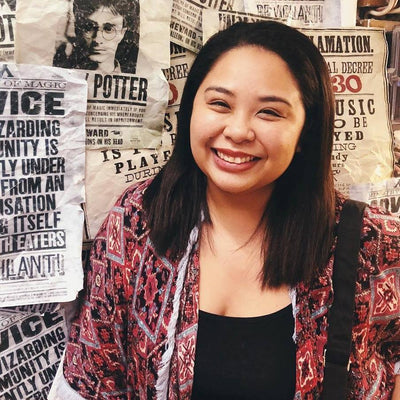Back in grade school in the Philippines, my classmates would always fawn over the students who were fair-skinned and mestiza (a term for people of mixed race, usually considered superior to the indigenous Filipino population). They would always notice if a new student was foreign-looking, as did everyone else. And as a kid, I always thought it was normal.
When I’d come home from school and turn on the TV, sitcoms would portray the beautiful girl as having white skin, and would even guest-star Caucasian actresses. The storyline always involved one of the characters hopelessly falling in love with that ‘beauty.’ This is what I’ve always known and accepted: being maputi (white skinned) is better. People regard you as prettier, and you get treated better.
I wasn’t especially dark-skinned. I was brown; morena as most Filipinos are. But I do remember being conscious that I wasn’t as white as the “pretty girls”. I’ve always looked at myself as plain-looking because of it. But living in the time that we do now, I’m glad the conversation around this has changed for the better.
Brown And Beautiful: The #MagandangMorenx Movement
Back in 2017, Filipino-American actress and digital creative Asia Jackson started a global movement called #magandangmorenx, which aims to shatter the enforced standard of beauty: that white means prettier and better.
On her website, she writes, “Tan and brown-skinned Filipinos are made to feel insecure, ashamed, and embarrassed of the natural color of their skin despite being indigenous to a cluster of tropical islands in the southeast Pacific, where the geography and climate make brown skin the norm.”
Took me 20 yrs to embrace my skintone. I created this hashtag to empower others in a way that I didn’t have growing up #MagandangMorenx 🇵🇭🤘🏾 pic.twitter.com/vZfgnNAa8x
— Asia Jackson (@aasian) October 27, 2017
Reading this made me think about what I’ve become accustomed to. Do we regard white skin as prettier because it’s more rare? And by accepting this idea, in what ways are we allowing our self worth as Filipinos be taken away
One of the best things to come out of the #magandangmorenx movement is Filipinos all over the world sharing even the little things that enforces this toxic mindset. A lot of it, for sure most of us can relate: from moms and aunts forcing whitening products on us, or saving up to buy whitening lotions ourselves.
I remember stealing my titas and lolas bleaching lotion and walking around with umbrellas outside all the time when I was little because I was so scared of being dark. Now I’m out here living my best brown life! I love my skin and I love being Filipina❤️ #MAGANDANGMORENX pic.twitter.com/GCM2FrU8SY
— zoe🍬 (@zoevaplz) May 31, 2018
I’ve struggled with colorism as a child; my mother’s side of the family were fair skinned and my grandfather, especially, was vocal about the color of my skin. Here’s a bilingual poem on my experience that I wrote as my project for a linguistics program. #MagandangMorenx pic.twitter.com/ZdiVVAkUxw
— 🔺 ᜋᜒᜌ᜔ᜈ᜔ 🔺 (@pilipinhoe) May 31, 2018
In high school, my mom used to buy me boxes of whitening soap and complain about my complexion, I quit my favorite sport bc I was getting too dark, and my cousins always teased me about my curly hair.
— mar-ay-ugh (@MariahMoneda) June 1, 2018
It’s about time I stopped being ashamed of my natural beauty#MagandangMorenx pic.twitter.com/WFGedHbI9E
"Grabe, you got dark."
— Anna (@ChocolatoAnna) May 31, 2018
Thanks! It's really just my natural skintone that took me so long to love because y'all be clocking Filipino's for their skin, when various shades of brown is totally normal living in a tropical country.
But go off, Donya Victorina.#MagandangMorenx pic.twitter.com/jd7PwkdW1g
Stories are powerful and make us feel seen.
Personally, I never really processed what all this meant growing up. I knew mestizas were treated better in person and in the media, but I accepted it as a fact of life. What did it really have to do with me? And what could I really do about it?
Now I do what I can to combat my own negative thinking about how I look. I’m also more aware of the ways society pushes colonial mentalities and unrealistic standards of beauty. I feel incredibly lucky to be alive at a time where people who look like me are empowered to have conversations about the diversity of beauty.
But ending our obsession with lighter skin is an ongoing battle. It won’t end that fast or that easily -- it needs a commitment from every Filipino to really feel proud and be steadfast in their belief that brown IS beautiful.
And what comfort it is to know that we only have to click on the #magandangmorenx hashtag to be reminded that there are countless others who are fighting the same battle with us.
Pictured above: model Madette Mendoza, photo by Rachel Pangilinan of Sincerely Image
AA Abjelina

AA is Cambio & Co's resident storyteller who is currently finding her way around the world of social entrepreneurship. Born and raised in the Philippines, she is a corporate communications professional / certified bookworm / Netflix addict / San Antonio Spurs lifer / Roger Federer stan. Aside from reading the newest fiction books she can get her hands on, in her spare time, she also likes to revisit Middle Earth, Westeros, and Hogwarts over and over again.



Leave a comment